Timing Exercise Print Sheet
Mark your own timings on the print sheet provided (PDF). All you need to do is shade in the note boxes at the appropriate positions in the measure. For example...

❱ Download the Print Sheet Here
Basic Note Value Combo Timing Exercises
Start simple. Here we transition between two different note values. The key thing to practice here (remembering to start at a slow tempo such as 40-60 BPM) is making these transitions as seamless as possible. The beat won't wait for you!
You can play anything you like, but I find timing exercises are good to combine with learning scale patterns or coming up with new licks or riffs. Make timing a more conscious part of your regular practice. Kill two birds with one stone, as they say.
Try repeating each measure to begin with and then play through all the measures in a sequence.
For example, transitioning between half notes and shorter notes...
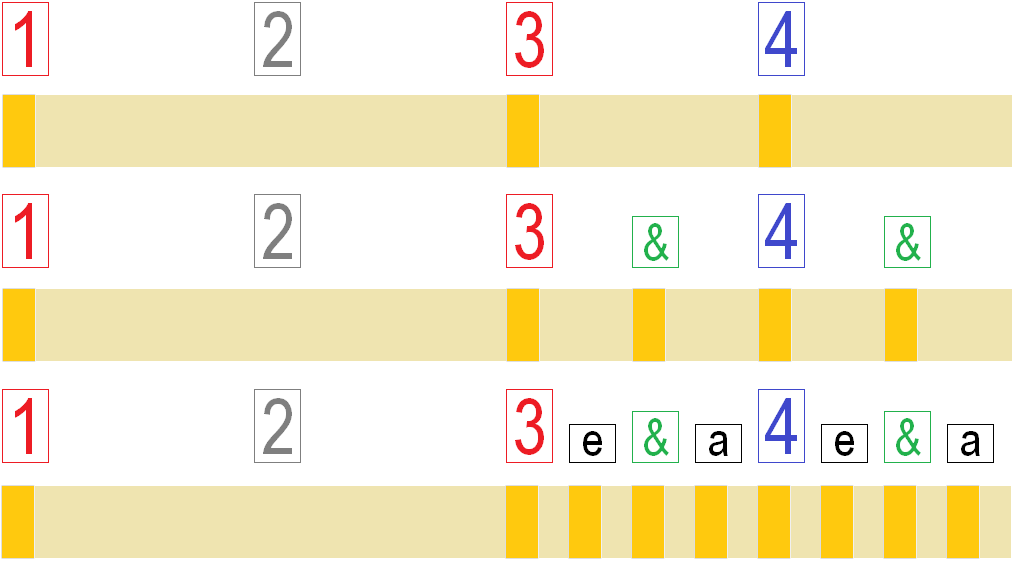
Try reversing the patterns so you start with the shorter notes moving into a half note on the 3rd beat.
Transitioning between quarter notes and shorter (8th, 16th) notes...
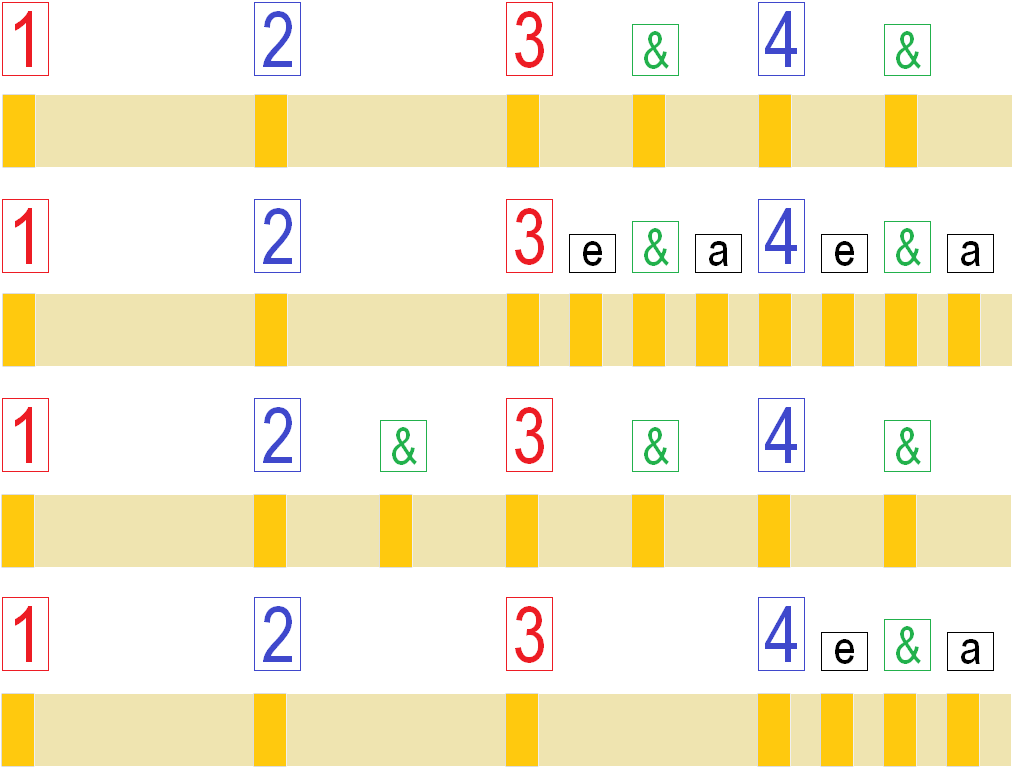
OK, I think you get the idea. Try similar exercises transitioning between 8th and 16th notes. You can position your transitions on any beat you want.
Next, try two transitions per measure. For example, changing from quarter to 8th to 16th notes...
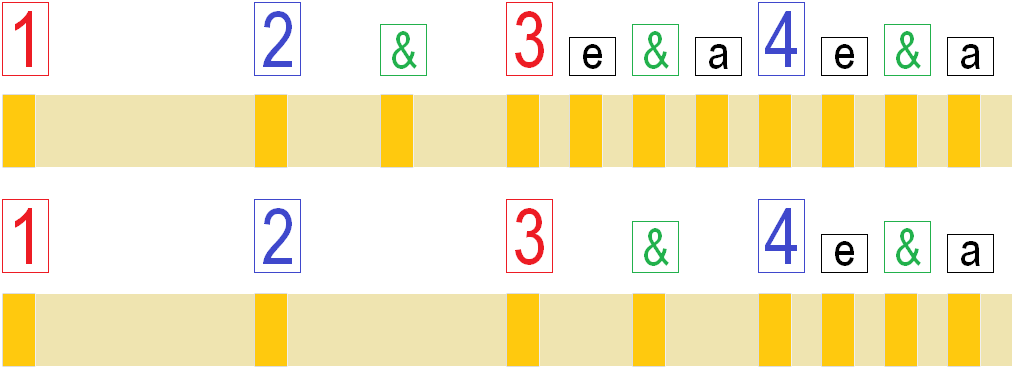
Mixing Up Note Values
Sometimes a straight run of notes (whether half, quarter, 8th or 16th) will be fine for the sound you're trying to create.
But if you want to create more dynamic and "punctuated" phrases, you'll want to mix things up a bit.
Try the exercises below, where we interchange between different note values...
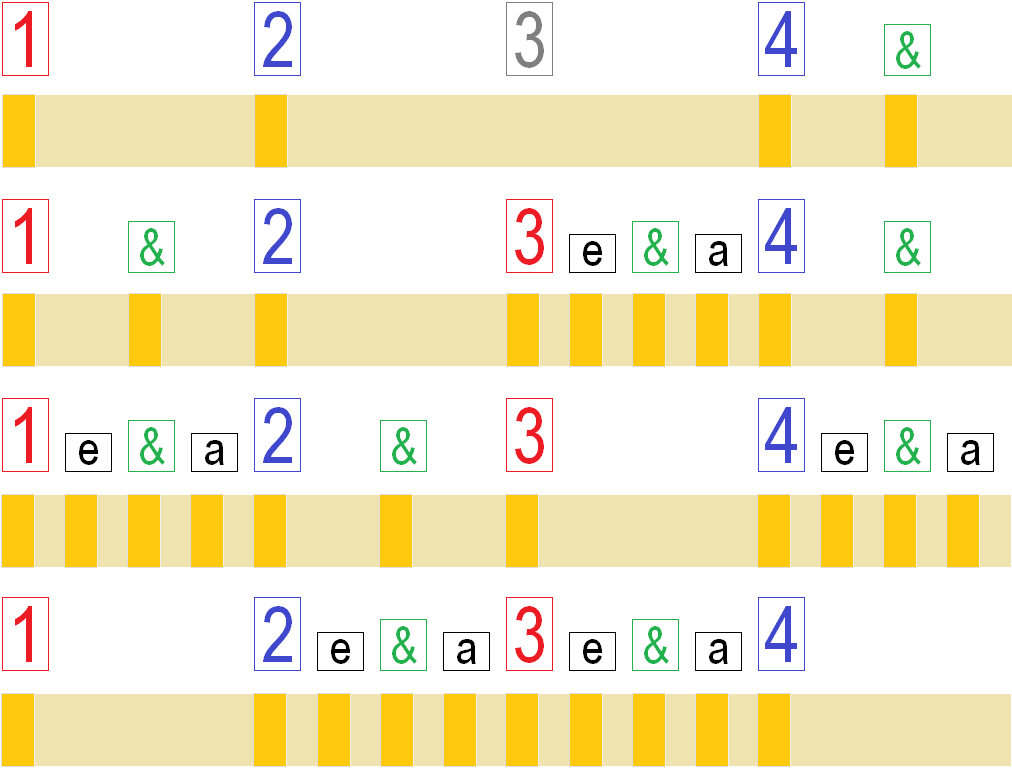
16th Note Groupings
16th notes don't always have to be in even groupings of four, eight, twelve, sixteen etc.
For example, by starting/ending our 16th note runs on the "&", we can give our phrases a slightly different feel...
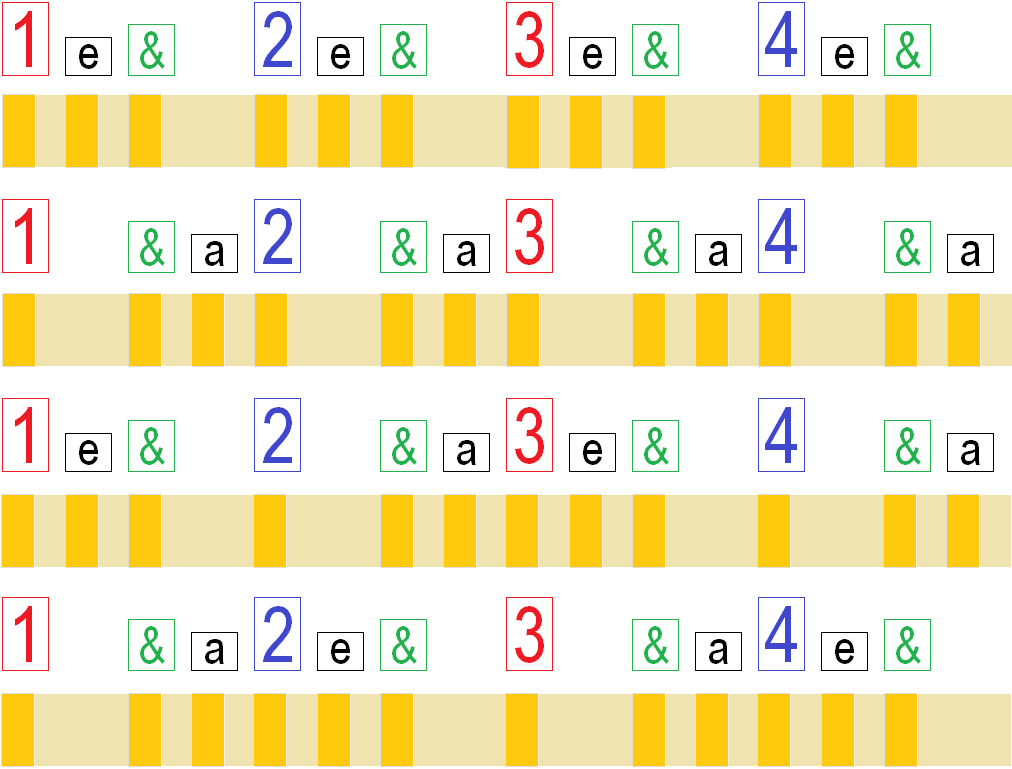
Off-Beat Timings
Playing on the beat, as we've been doing up until now, is often called "locked in" timing, and is an integral part of pop and rock rhythm. Since the strongest accents in a measure are on the beat, transitioning between note values on the beat creates a strong, reliable pattern.
But we can "loosen" things up a bit by transitioning between note values off the beats.
Now, here's where things get a little groovier! As demonstrated in the video, we can use off-beat timings to create what is known as syncopation, which gives your lead a propulsive momentum.
Syncopation can be described as placing accents or rhythmic stresses in unexpected places. Those unexpected places are anywhere off the beat - the "&", "e" and/or "a" in the measure.
For example, starting quarter notes on the "&" in between beats. Or starting 8th notes on the "e" or "a" between beats.
Straight Runs Off The Beat
Start by playing a run of equally spaced quarter notes on the "&". All we've done is shift the regular quarter note pattern forward in the measure...

A little more challenging, try positioning those quarter notes on the "e" and "a" of the measure...
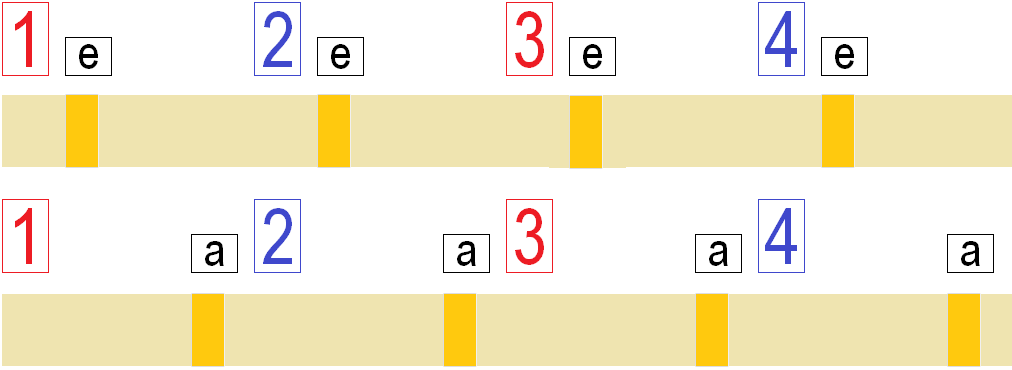
Tip: if you're struggling, make sure you're at a slow tempo and start counting to help.
For example, on the "e" I would count: "1 eee, 2 eee, 3 eee, 4 eee".
On the "a", I'd count "& aaa, & aaa, & aaa, & aaa".
Once you internalise these positions and can play at higher tempos, you won't need to count! It's like taking the stabilisers of the bike.
Try something similar with 8th notes...

Combining Off Beat With Regular Timing
Finally, we inject this off beat syncopation with regular timed notes...
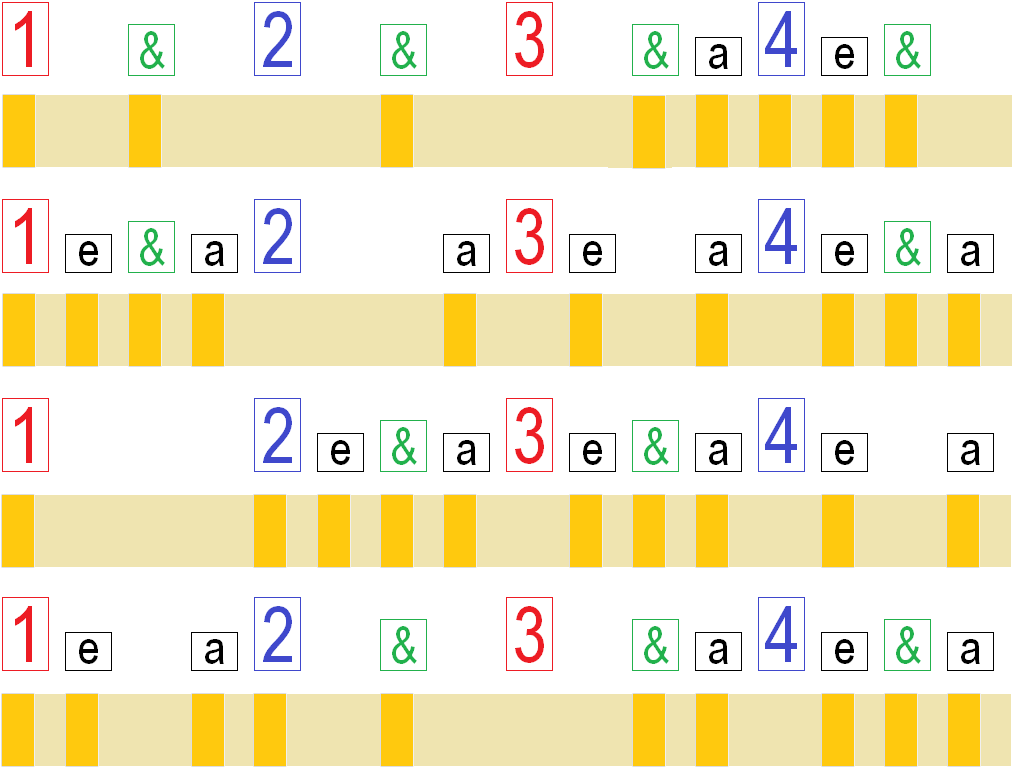
The more you practice different timings, the more you'll internalise these elements so you can use them in your own music intuitively (without thinking too much about it).
The ultimate aim with all this is to get to the point where you can "feel" the kind of timing that would best serve the moment, so you can articulate what you're trying to express.
A good analogy for this is when we learn to string together words and punctuate sentences, so we can communicate thoughts, ideas and emotions. Like music, verbal communication requires a certain rhythm and timing to articulate our thoughts more clearly and emotively.
Think of music, both in terms of the notes you play and how you play them, as just another form of communication.
Until the next part, thanks for your time (no pun intended).
